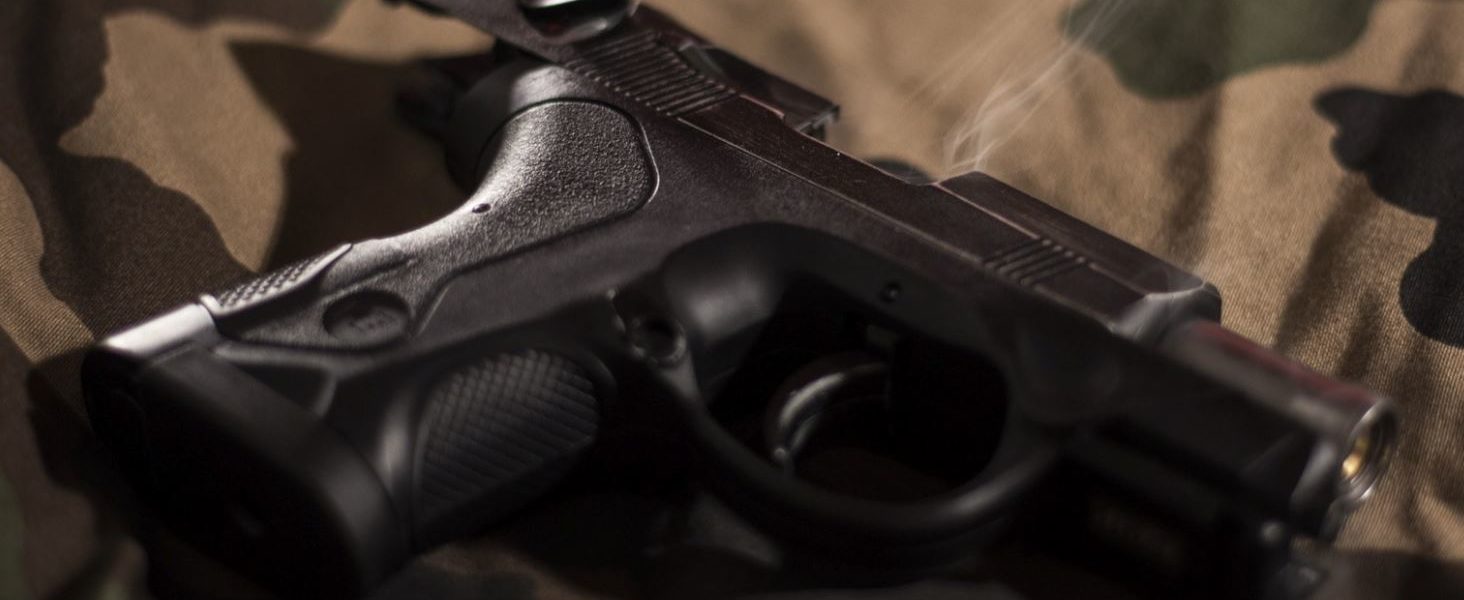By Daniel Bendtsen
Laramie Boomerang
Via Wyoming News Exchange
LARAMIE — Attorneys representing the University of Wyoming filed the school’s first arguments Tuesday in a Wyoming Supreme Court case concerning UW’s ability to restrict the carrying of firearms on campus.
Lyle Williams, a Uinta County delegate to the Wyoming State Republican Party Convention last year, sued the university after UW police cited him for openly carrying his firearm during the political rally at the UW Conference Center.
Williams argued the school’s ban on guns violates Wyoming Statute 6-8-401, which prohibits gun regulations by any “city, town, county, political subdivision or any other entity.”
In December, Albany County District Court Judge Tori Kricken decided UW does have the right to regulate guns, in part because she determined that statute, Section 401, only applies to guns manufactured in Wyoming.
The applicability limitation for Section 401 was likely an error by the 2010 Legislature made during the passage of the Wyoming Firearms Freedom Act.
Even if the 2010 Legislature hadn’t made that mistake, however, Kricken said UW would still have the right to regulate guns because it’s an arm of the state, not a “city, town, county, political subdivision or any other entity.”
Ultimately, the arguments before the Wyoming Supreme Court deal with three legal questions:
- Does the state’s pre-emption of gun regulations deal apply to all guns?
- Do all UW properties qualify as “sensitive places” exempt from Second Amendment protections?
- Does UW, as an arm of the state, have the right to regulate gun possession in a way local governments can?
Laramie attorney Jason Tangeman, who’s representing Williams in his appeal, had argued that U.S. Supreme Court protections of “sensitive places” do not apply to the UW Conference Center.
The U.S. Supreme Court affirmed certain exceptions to the Constitution’s Second Amendment in the 2008 landmark case District of Columbia v. Heller.
In that case, the country’s high court struck down the District of Columbia’s handgun ban while upholding “laws forbidding the carrying of firearms in sensitive places such as schools and government buildings.”
The UW Conference Center, Tangeman argues, is “not formally on the campus” and is “not even a building that has a nexus to an educational purpose.”
In UW’s Tuesday response to Tangeman’s arguments, the school’s attorneys reiterated the stance that all UW properties qualify as “sensitive places” in large part because of the number of youth, including those attending the UW Lab School, who visit campus.
“Here, neither the Second Amendment nor … the Wyoming Constitution require the University to promulgate different firearm regulations for each location on University grounds depending on the use of the particular location,” UW attorneys argue. “But even if such site-specific regulations were required, the UW Convention Center is a location “where people congregate and are most vulnerable.”
Attorneys representing UW said in their brief that the university’s gun ban is important for “creating a safe environment.”
“The University is aware of arguments by gun rights advocates that arming students, faculty and visitors creates a safer environment on college campuses,” UW’s attorney said. “The truth of this claim remains doubtful. The National Academy of Science reviewed the conflicting claims about the issue and basically declared that the debate had no winners, for there was ‘no credible evidence that the passage of right-to-carry laws decreases or increases violent crime’ and ‘the data available on these questions are too weak to support unambiguous conclusions or strong policy statements.’”
The pre-emption of gun regulations by the state under Section 401 has existed since 1995. In 2010, gun advocates in the Legislature attempted to update the statute to add even more restrictions on gun regulations. However, they did so using the Wyoming Firearms Freedom Act, a law largely intended to skirt federal regulation of Wyoming-made guns.
The update to Section 401 was a tangentially-related “rider” to the law. However, the law also begins with an applicability clause: “This act shall apply to firearms, firearm accessories and ammunition that are manufactured in Wyoming.”
That applicability clause applies to the Section 401 update as well, Kricken said in December, meaning that, since 2010, the state’s pre-emption of gun regulations applies only to guns manufactured within the state.
If the Wyoming Legislature doesn’t want its ban on regulations to apply only to Wyoming-manufactured guns, it’s the Legislature’s job to fix its mistake, Kricken said.
“If, indeed such is the case, then it is within the province of the Wyoming Legislature, not this court, to correct said typo,” she wrote. “The Legislature is more than competent to amend the current statutory scheme to remove (Section 401) from the act, should it deem necessary.”
In response to Kricken’s ruling, Sen. Dave Kinskey, R-Sheridan, brought a bill this legislative session that he said was chiefly aimed at “changing the result in the lawsuit.
“If you have a firearm that was not made in Wyoming, you can have different rules in each city each, county and each town. That’s the result we’re trying to avoid,” Kinskey said when introducing the bill. “I didn’t want to bring anything into play other than restoring what was the original intent of the local preemption statute. Those other questions are questions for another day. A lot of us feel like campus carry is the right thing to do, but that’s not what we’re trying to do in this bill.”
That bill sailed through the Senate in early February.
Only two of the 15 original co-sponsor of the Wyoming Firearms Freedom Act are still in the Legislature. But when the Senate discussed Kinskey’s bill, its membership seemed confident that the 2010 Legislature did not intend to do what Kricken said they did.
“What happened with that bill in 2010, when everything was numbered, the preemption had a few changes in it to comply with the firearm freedom act, and it was inadvertently numbered in that bill,” said Sen. Anthony Bouchard, R-Cheyenne, during the February floor debate.
Kinskey’s bill was ultimately killed by the House Appropriations Committee, none of whose members were in the Legislature when the Wyoming Firearms Freedom Act was passed.
Neither side’s attorneys have discussed the legislative record from the original 2010 bill’s vetting in their briefs.
But the record seems to suggest that it was, in fact, merely a drafting error that led to Kricken’s decision.
A summary of the bill created in 2010 by the Legislative Service Office outlines 10 things the bill does. Changing the applicability of Section 401 isn’t one of them.
In 2010, the bill came up for floor debate four times in the House and Senate. In none of those discussions did legislators ever say that the bill would strip out some of the state’s pre-emption on gun regulations.
Sen. Kit Jennings, a Casper Republican who co-sponsored the bill, even said in 2010 the bill only included Section 401 in the Wyoming Firearms Freedom Act to add political subdivisions to the list of government bodies not allowed to regulate guns. When explaining the bill on first reading, he gave no indication the bill’s sponsors knew that other aspects of the bill might affect a judicial reading of Section 401.
Tangeman’s response to UW’s opening brief is due May 8.





